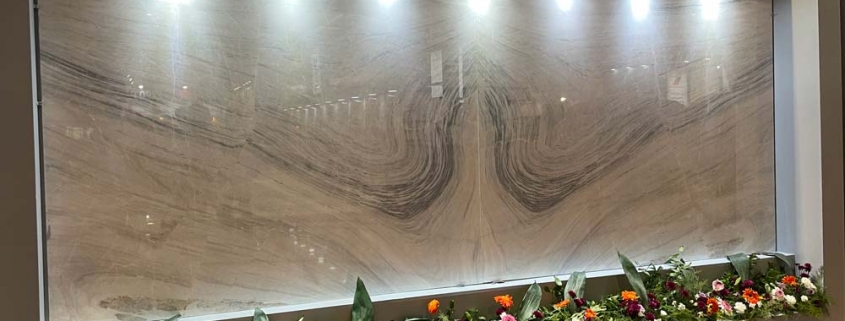Building stones and their uses
Building stones consist of one or more minerals. Stone is one of the main materials in the construction industry and it is used in different parts of the buildings. Among the most important uses of the stones, the following items can be mentioned:
- Stones that are used for decorative purposes in the internal or external parts of the buildings.
- Stones that are used for the paving and internal walls of the buildings.
- Stones that are used in form of blocks for the building foundations, dams, tunnels, etc.
Effective factors to choose building stones
When choosing a stone, you should first pay attention to its usages in the building, and then you can refer to the factors such as durability, physical and chemical analysis of the stone, color and price.
Durability and analysis
Durability and strength of a building stone depends on its resistance to the different factors such as atmospheric conditions, pressure and acid chemicals. Unfortunately, the durability of the stones which is one of the most important factors in choosing them, is not considered usually. Besides, one of the important factors affecting the durability of a stone is its chemical structure or constituent minerals. Also, the place of stone installation is another important and effective factor in choosing a building stone. It should be noted that weather conditions and the amount of humidity or dryness have a direct effect on the weathering rate of the stone.
Structure
Each of the structural weaknesses of the stone accelerates its weathering process. Therefore, cracks, breaks and the presence of harmful minerals in the stones can cause the destruction of them and weathering problems.
Texture
As the stones have a denser and less porous texture, they are more resistant to breakage and weathering factors. Stones with high porosity also have a high percentage of water absorption and this may cause them to destroy faster. Since the stones are made of different minerals with different structure and resistance, it is natural that they have different resistances to weathering.
Harmful minerals
Some minerals such as iron sulfur in all the stones are considered as the harmful minerals, and by facing with moisture or humidity, they oxidize and turn into hydroxide and make the stains on the surface of the stone. Also, the large amounts of mica minerals in the stones such as marble is harmful and they may cause some problems for the stones such as color changing over time.
Technical characteristics
Technical characteristics of the building stones are measured by physical and chemical tests, and they are different depending on the stone type, structure and minerals. Chemical tests show the chemical composition of the stones, and the physical structure of the stones is also measured with their specific weight, pressure resistance, abrasion resistance, porosity, etc.
- Specific weight of the stone: Based on this factor, the stones are divided into two groups: light with a specific weight of less than 1.8 t and heavy with a weight of more than 1.8 t. The specific weight of the stones has an effect on their polishing ability, so stones with a specific weight of less than 1.8 t don’t have a good polishing ability, and stones with a specific weight of above 2.2 t have a high polishing ability.
- Water absorption: The amount of the stones’ water absorption is different, and in general igneous stones have a relatively low percentage of water absorption, while limestone and sandstone have a high percentage of water absorption. As the stone’s water absorption is lower, it has a better quality.
- Porosity: Porosity is the amounts of empty spaces in the stone. The higher the porosity of the stone, the higher the water absorption rate and the lower its pressure resistance.
- Pressure resistance: This parameter shows the stability of the stone against applied pressure. Most stones have a pressure resistance of more than 40 MPa, but igneous stones have a pressure resistance higher than 140 MPa, and the maximum pressure resistance required for the stones of the tall buildings is 1 MPa.
- Bending resistance: The resistance of a stone against bending forces is called bending resistance. When the stones especially on the horizontal surface crack against small shocks, it is because of their low bending resistance. The bending resistance of a stone has no relationship with its pressure resistance. And, high humidity of the space reduces the bending resistance of the stone.
- Abrasion resistance: Abrasion resistance of a stone depends on the kind of its minerals. And, the different minerals bring the different abrasion resistance to the stone. Stones used in the places like stairs and pavements should have a high abrasion resistance.
Stone color
The stability of the stone color depends on the installation place of the stone. If colored marble stones especially dark ones are installed in indoor spaces, their colors will last for years. But, if the same stones are encountered weather factors such as sunlight, they will quickly lose their color. Also, the chemical changes of unstable minerals in the stones can also change the color of the stones especially white ones. In general, the color of the stone is more visible and it is a very important factor. But, when choosing a stone, you should know that dark colored lime stones such as marble, onyx and sandstone should not be installed in the outdoor spaces, because they lose their colors against the sunlight or air pollution. And also, the proper viewing distance to recognize the color of the stone should be about 1 to 5 meters from the person’s eyes. Because, the appearance and color of the stones can’t be seen from a longer viewing distance.
Uses of building stones
Stone is one of the oldest and most important building materials used by mankind. Nowadays, because of the progress in the extraction and processing of the building stones, their uses in different parts of the buildings have become more common. Among the most important uses of natural stones in the construction industry, the following items can be mentioned:
- Internal walls: most of the building stones can be used to cover the internal walls of the buildings.
- Paving and stairs: stones used in these places must have low porosity and water absorption, also they should be resistant to abrasion, acids and other detergents.
- Façade stone: the façade stones face sunlight, wind, storm, cold, heat and pollutants, so the facade stones must have resistance to them. In order to choose a good facade stone, you should pay attention to the following items:
- The weather conditions of the place where the stone is installed should be considered. For example, in high humidity areas, stones with high water absorption shouldn’t be used.
- The stone should have a good bending resistance.
- In the case of stone installation using mortar, the stone should have good adhesion.
- The stone color should be stable.
- It shouldn’t contain harmful minerals.
- Street pavements: The stones used in the street sidewalks and pavements should have a relatively high density, and they should also be resistant to the pressure and other harmful factors.









Leave a Reply
Want to join the discussion?Feel free to contribute!